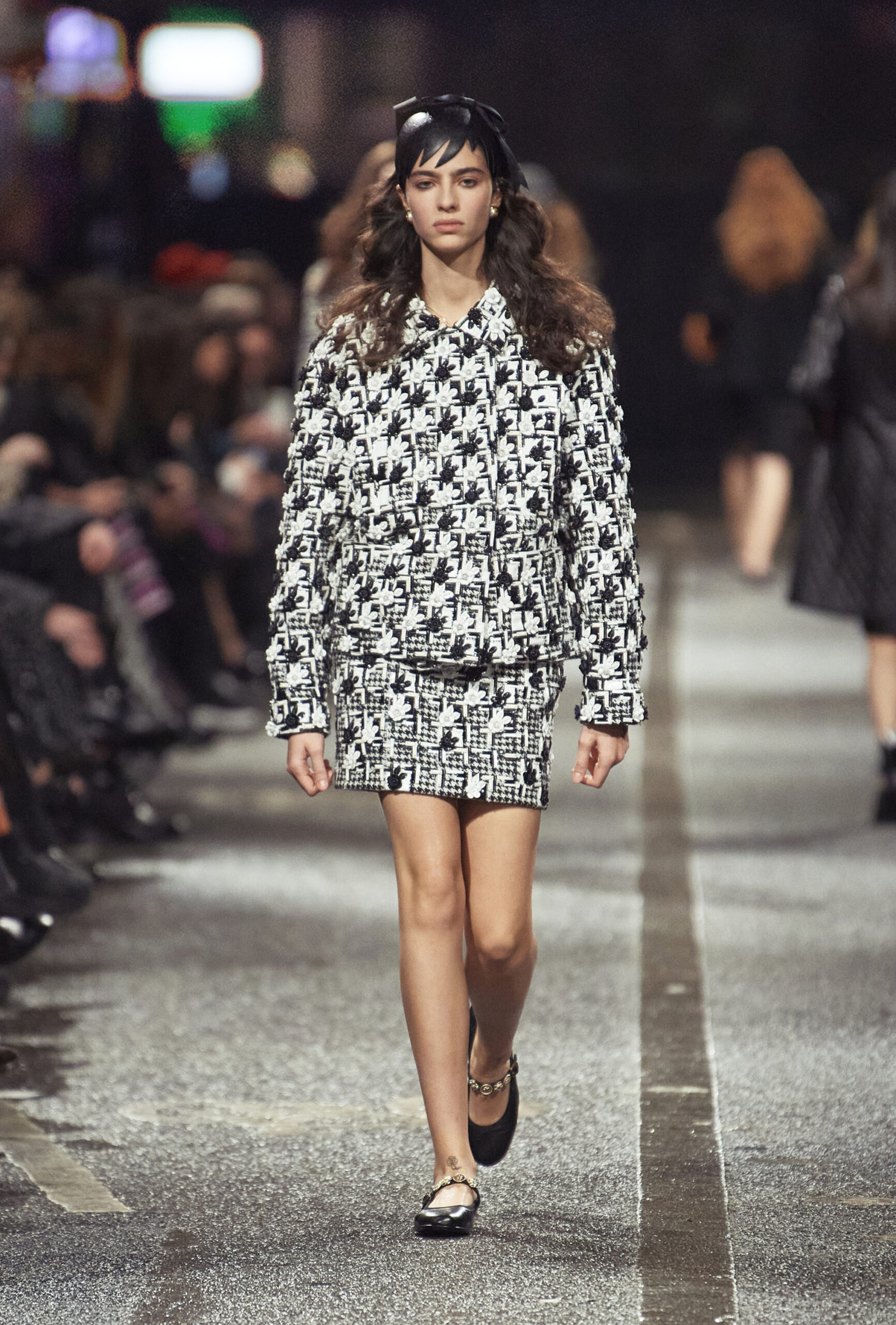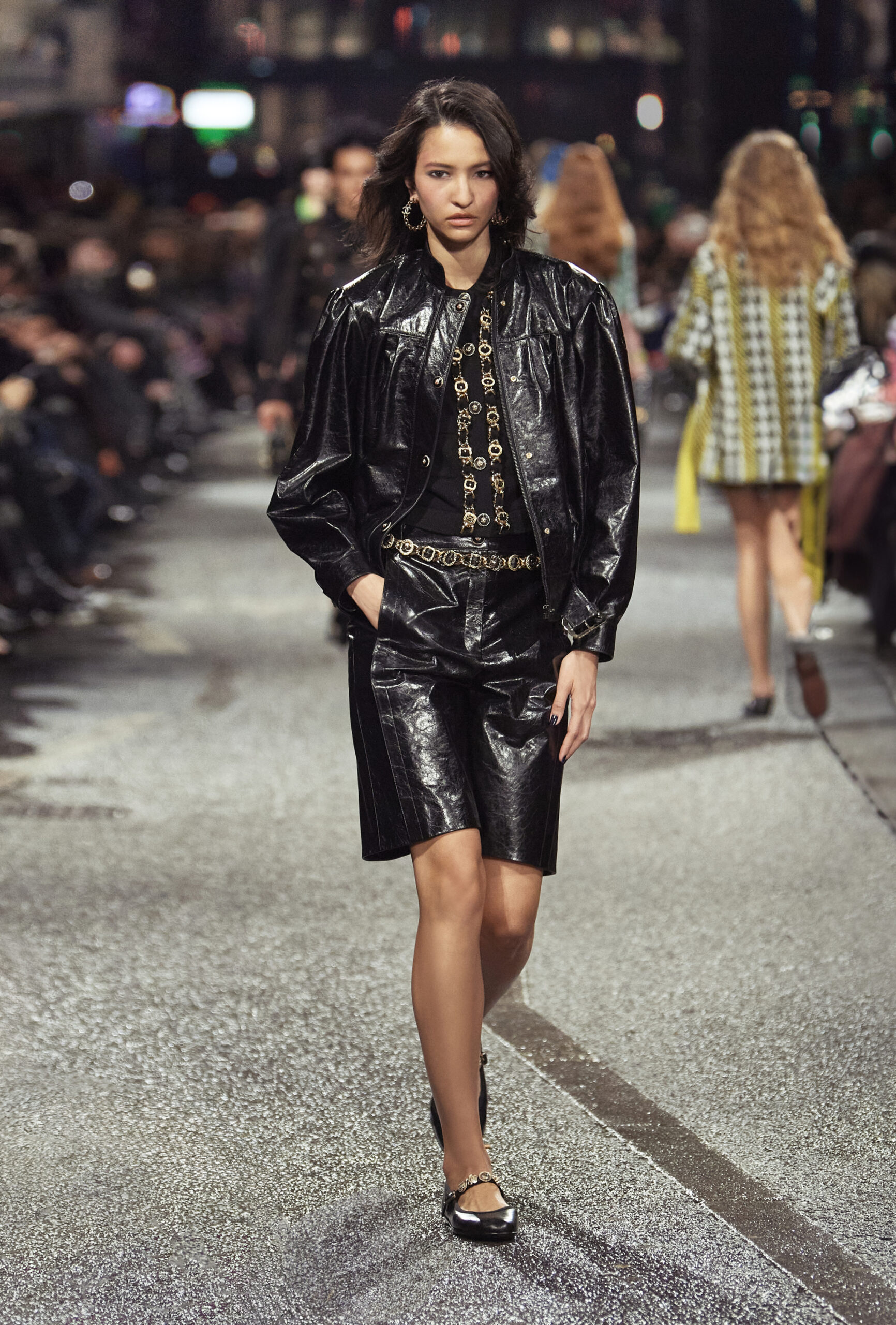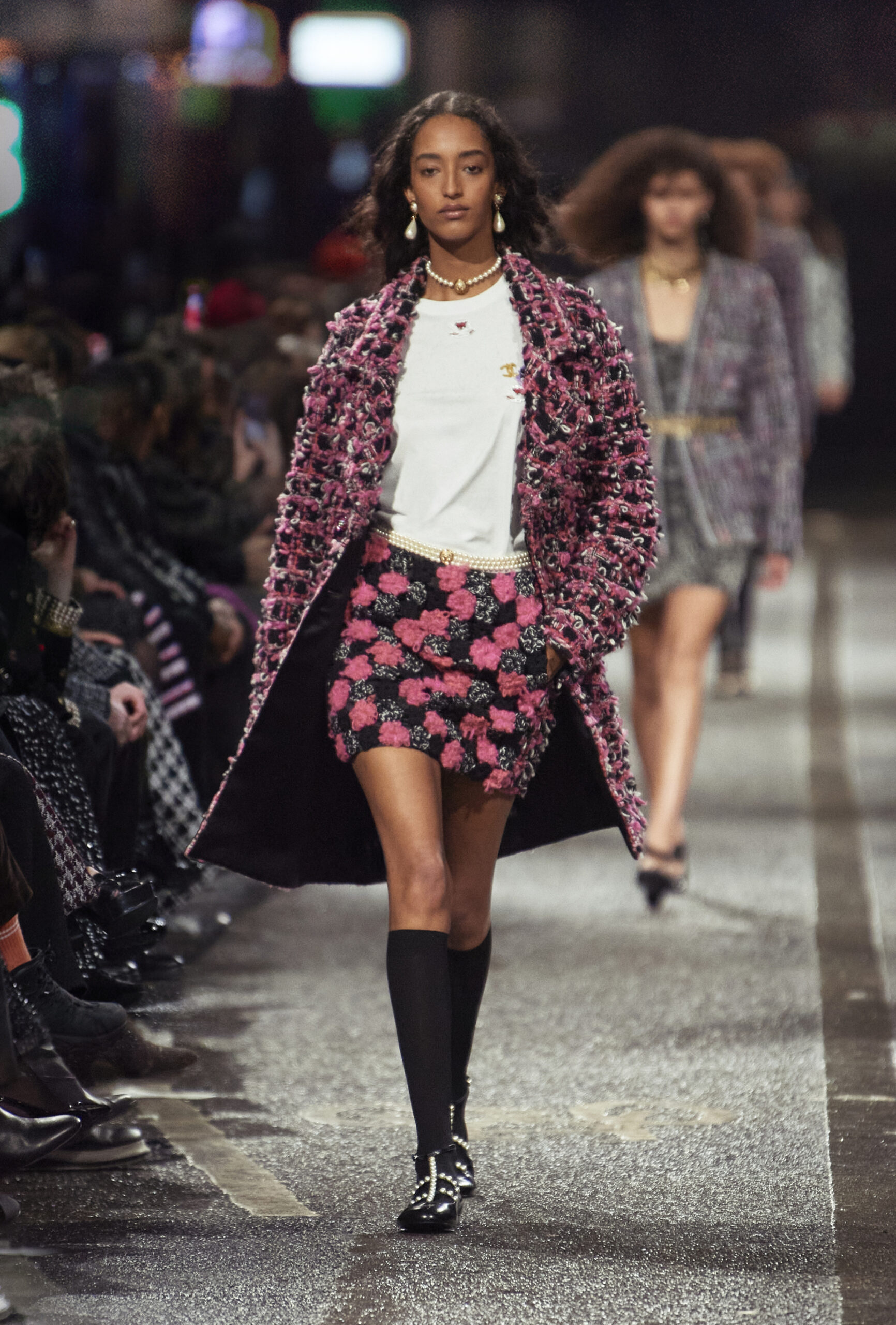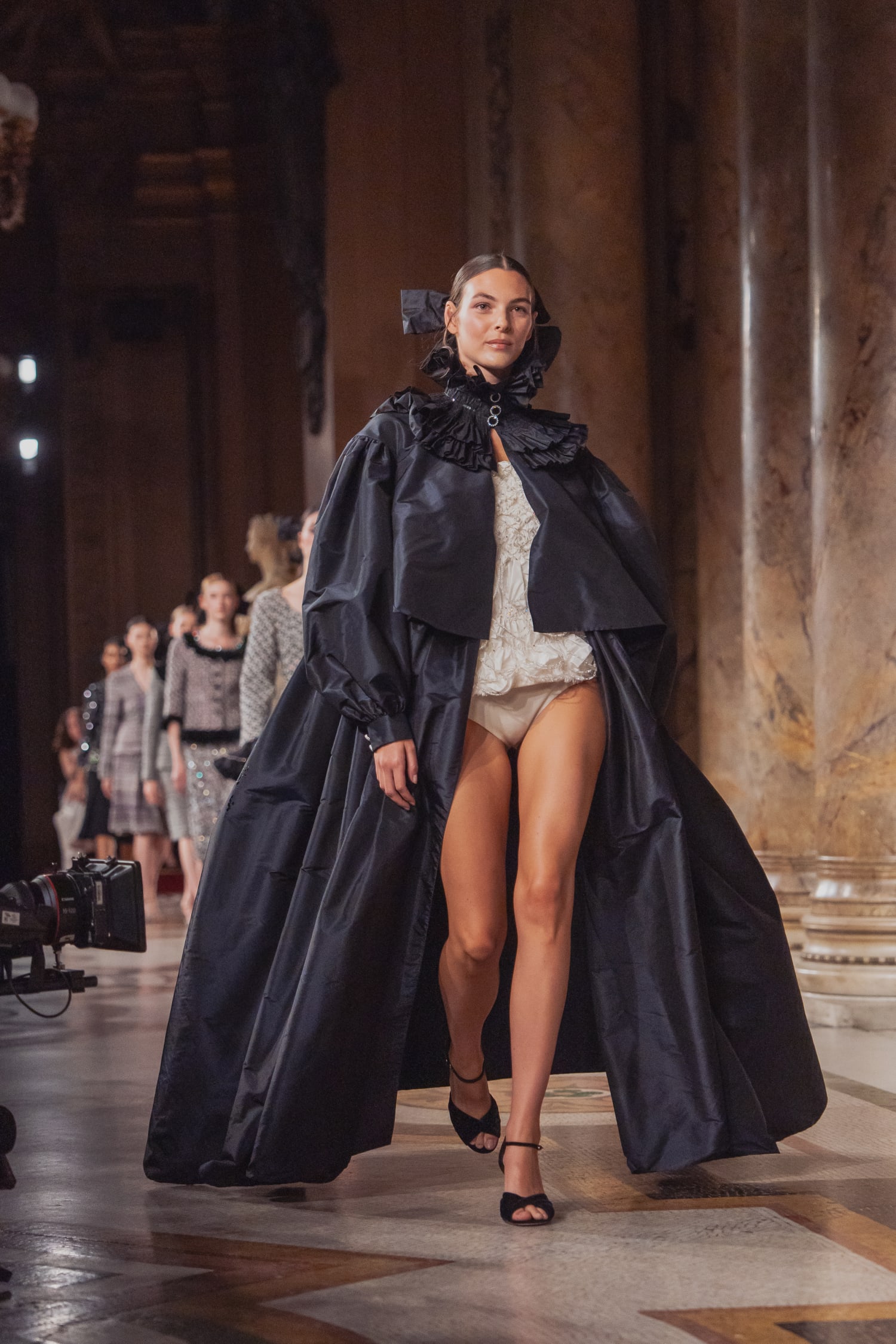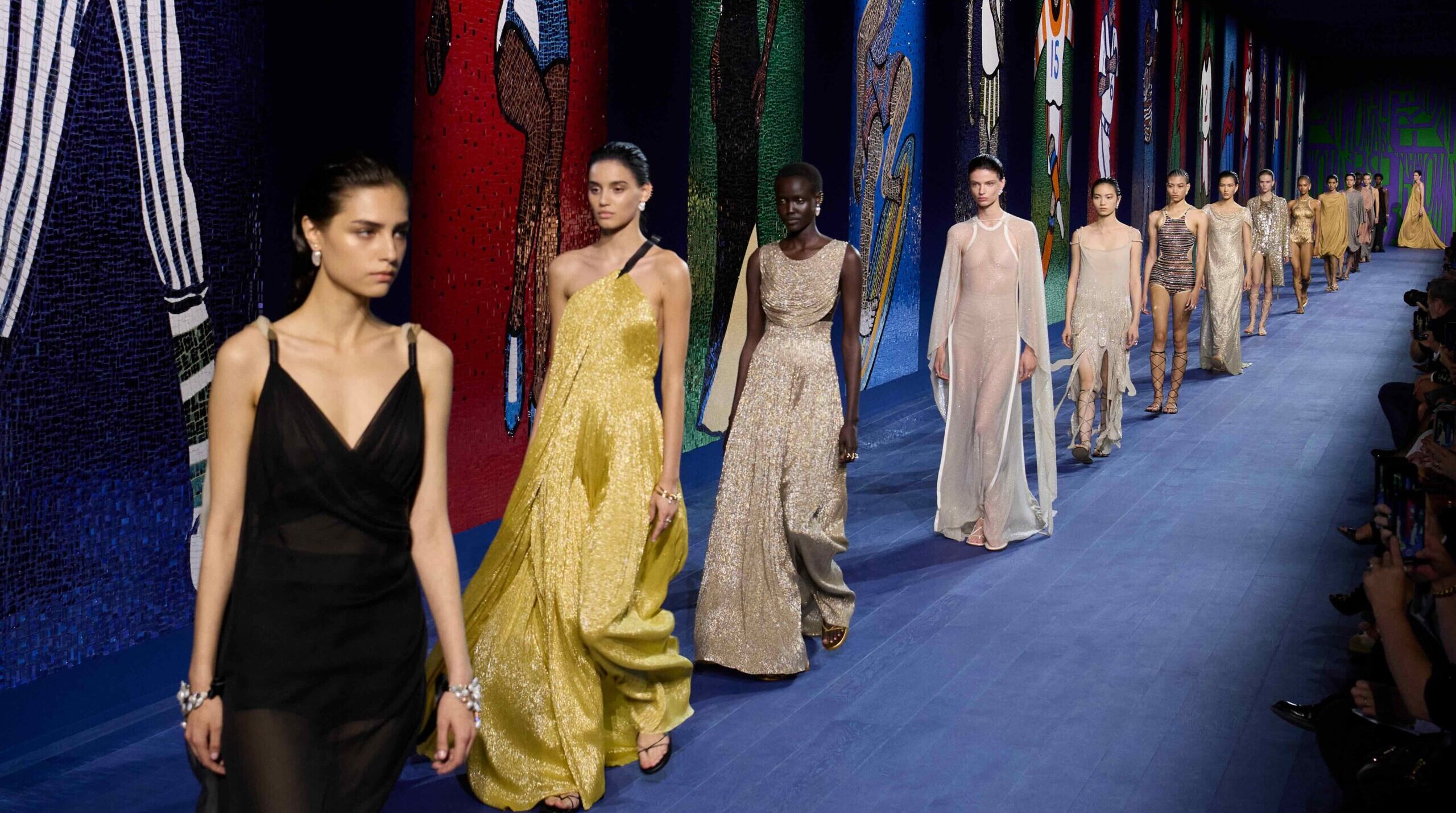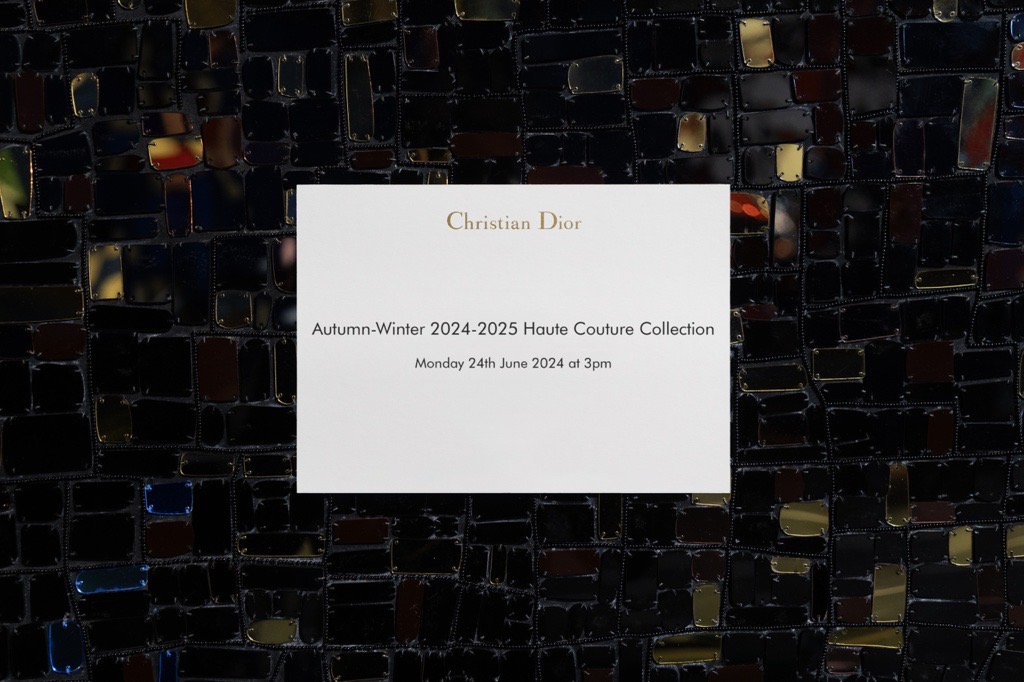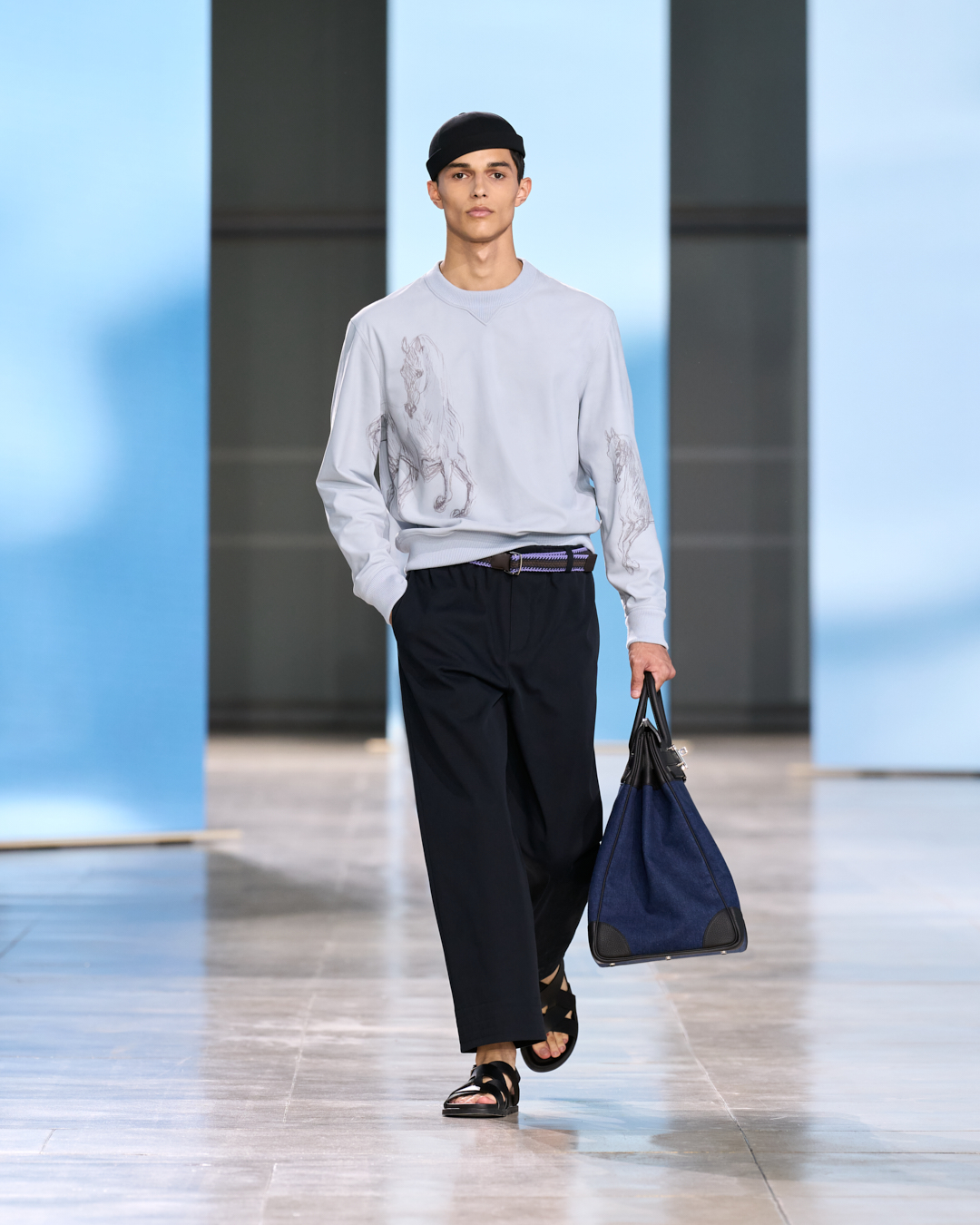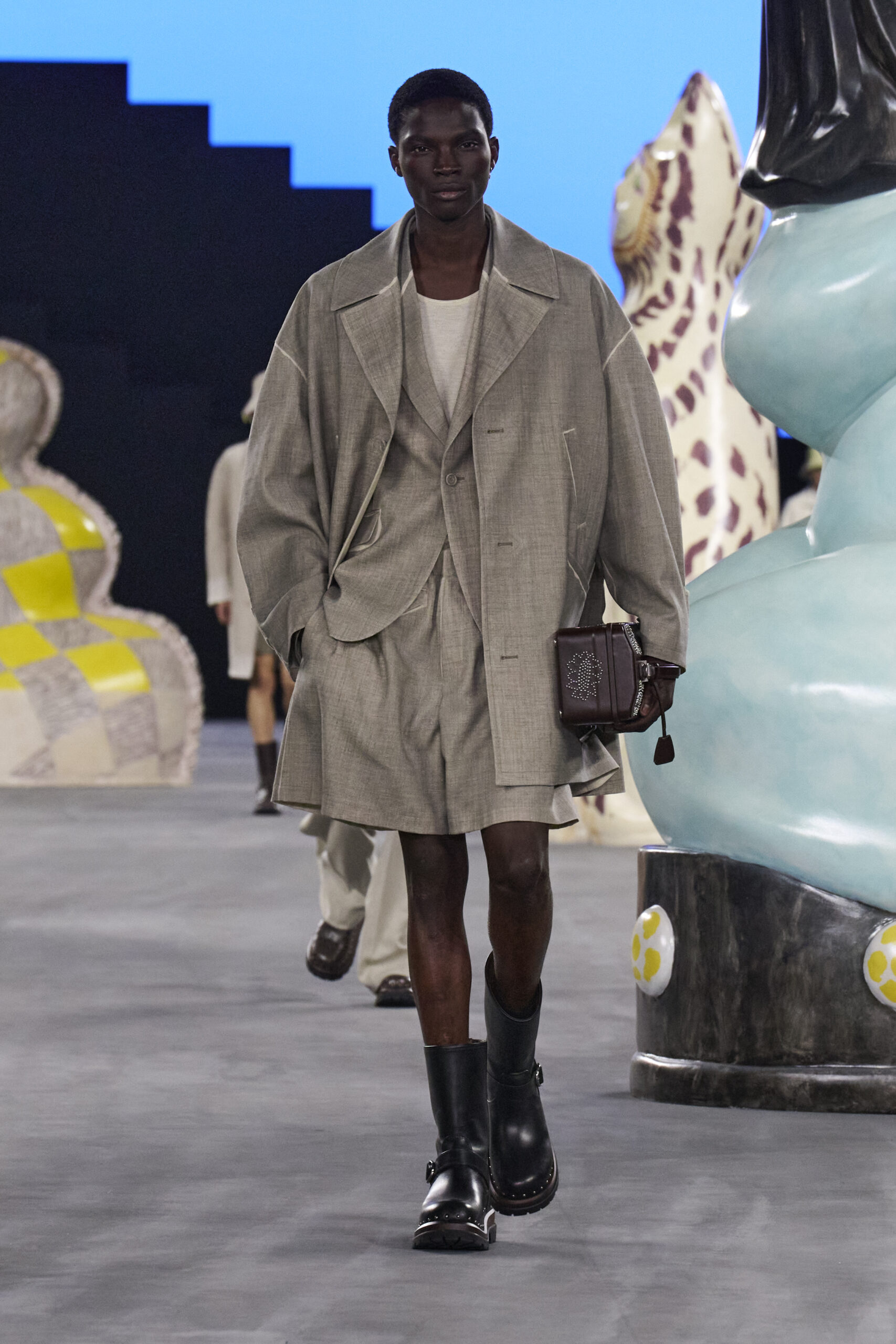Tweed mini-dresses, pins, and pearls abound on Thomas Street, while the distinctive tricolor of Manchester United—red, white, and black—dominates in hats and scarves. Then, there are the cashmere sweaters, this time inspired by the graphics of 1990s Manchester nightclub flyers, skillfully inlaid. The entire Chanel signature is evident in this collection, and yet Virginie Viard has demonstrated how well Coco’s legacy and the mancunian substrate complement each other. She pays homage to the working class of the 1960s and 1980s with bare legs, side fringes, knee-length and trapeze dresses, cycling shorts paired with coats, berets, and chain belts. Also, to the female icons of the New Wave era, thanks to black paint and baby-dolls enriched with embroideries adorned with the iconic double-C pins. British culture is encapsulated in flare skirts, Bermuda shorts, shirts, and coat dresses, all characterized by tweed. The looks are enriched with sailor hats, camellia-shaped rosettes, and ruffled hems. Chanel has reinvented babydolls and 1960s-style slips with open lace and intricate embroidery, enriched with strands of pearls or scarves with a football team logo: the Chanel woman is ageless, gracefully oscillating between her twenties and forties.

“Tweed is at the heart of this collection. I thought a lot about Gabrielle Chanel, but I didn’t want to recreate Coco’s look when she wore the Duke of Westminster’s jackets.”
Dresses, bags, and strands of pearls are arranged around a deliberately contrasting palette with the English sky, ranging from salmon pink to pumpkin orange, apple green to mustard, azure to red, and Bordeaux, giving space to a scene that is exquisitely feminine yet singular. Coco Chanel’s inspiration in the use of color is strong in the iconic tweed suits, here reinterpreted in multiple variations that recall the tailored and abbreviated silhouettes of the 1960s. The invitation to the fashion show, a fusion of orange and black, deliberately proposed a collage of images related to the subcultures of the city of Manchester: the striped design of the Hacienda nightclub, suffragettes protesting with their daughters, Emmeline Pankhurst, an archival image of The Factory, the headquarters of Factory Records founded by Tony Wilson and Alan Erasmus in 1978, and a photograph of Joy Division taken in 1979 under the snow on the Epping Walk bridge in Hulme by Kevin Cummins. If the previous Métiers d’Art fashion shows took place between the Ritz in Paris and Fellini’s studios in Cinecittà in Rome (or in the Scottish palace of Linlithgow, home of the Stuarts in the 15th century, in 2012), Viard has embarked on a new direction dictated by a bolder approach. Drawing inspiration not only from the vast industrial factories of Britain but also from the pulsating energy of the city’s music scene, Virginie has masterfully created a balance between the sacred and the profane.

“Too many things happen only in London, and we wanted to be in the UK outside of London. We decided to come to Manchester because it was the most significant source of inspiration for Virginie: she was inspired by the music and art she finds here in Manchester, and we received a warm welcome.”

